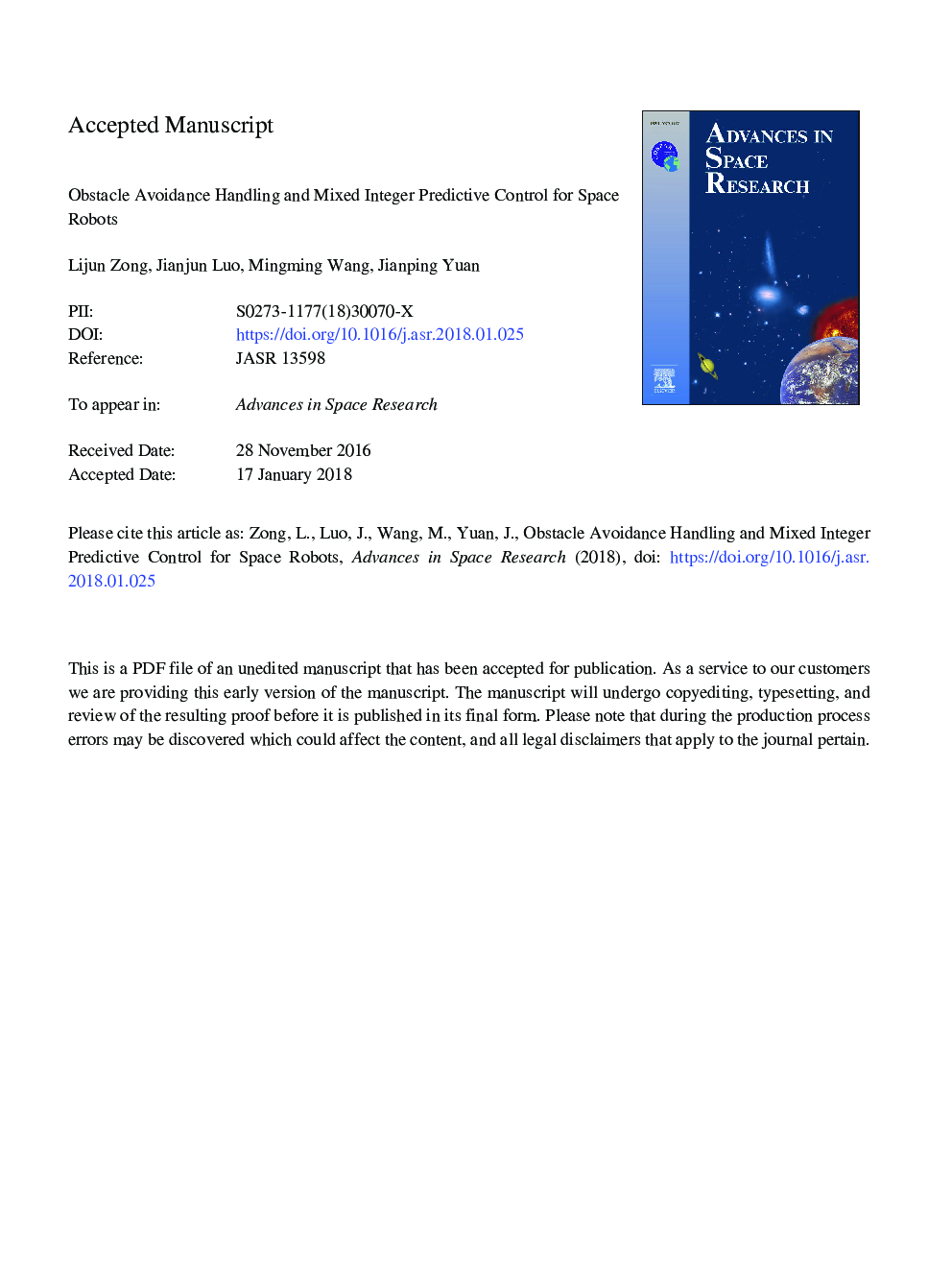| کد مقاله | کد نشریه | سال انتشار | مقاله انگلیسی | نسخه تمام متن |
|---|---|---|---|---|
| 8132040 | 1523271 | 2009 | 36 صفحه PDF | دانلود رایگان |
عنوان انگلیسی مقاله ISI
Obstacle avoidance handling and mixed integer predictive control for space robots
دانلود مقاله + سفارش ترجمه
دانلود مقاله ISI انگلیسی
رایگان برای ایرانیان
کلمات کلیدی
موضوعات مرتبط
مهندسی و علوم پایه
علوم زمین و سیارات
علوم فضا و نجوم
پیش نمایش صفحه اول مقاله

چکیده انگلیسی
This paper presents a novel obstacle avoidance constraint and a mixed integer predictive control (MIPC) method for space robots avoiding obstacles and satisfying physical limits during performing tasks. Firstly, a novel kind of obstacle avoidance constraint of space robots, which needs the assumption that the manipulator links and the obstacles can be represented by convex bodies, is proposed by limiting the relative velocity between two closest points which are on the manipulator and the obstacle, respectively. Furthermore, the logical variables are introduced into the obstacle avoidance constraint, which have realized the constraint form is automatically changed to satisfy different obstacle avoidance requirements in different distance intervals between the space robot and the obstacle. Afterwards, the obstacle avoidance constraint and other system physical limits, such as joint angle ranges, the amplitude boundaries of joint velocities and joint torques, are described as inequality constraints of a quadratic programming (QP) problem by using the model predictive control (MPC) method. To guarantee the feasibility of the obtained multi-constraint QP problem, the constraints are treated as soft constraints and assigned levels of priority based on the propositional logic theory, which can realize that the constraints with lower priorities are always firstly violated to recover the feasibility of the QP problem. Since the logical variables have been introduced, the optimization problem including obstacle avoidance and system physical limits as prioritized inequality constraints is termed as MIPC method of space robots, and its computational complexity as well as possible strategies for reducing calculation amount are analyzed. Simulations of the space robot unfolding its manipulator and tracking the end-effector's desired trajectories with the existence of obstacles and physical limits are presented to demonstrate the effectiveness of the proposed obstacle avoidance strategy and MIPC control method of space robots.
ناشر
Database: Elsevier - ScienceDirect (ساینس دایرکت)
Journal: Advances in Space Research - Volume 61, Issue 8, 15 April 2018, Pages 1997-2009
Journal: Advances in Space Research - Volume 61, Issue 8, 15 April 2018, Pages 1997-2009
نویسندگان
Lijun Zong, Jianjun Luo, Mingming Wang, Jianping Yuan,